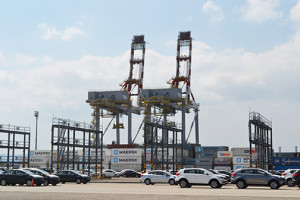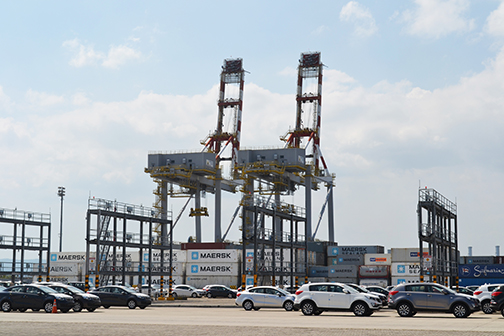 Asian Terminals Inc. (ATI) insisted that equipment and capacity at the Batangas port are sufficient to service increased cargo volume handled by the facility.
Asian Terminals Inc. (ATI) insisted that equipment and capacity at the Batangas port are sufficient to service increased cargo volume handled by the facility.
“The two quay cranes and the four RTGs (rubber-tired gantries) and the 12-hectare area (are) more than sufficient to handle the volume that’s coming in now,” ATI vice president for commercial and marketing Sean Perez said in response to a comment made during a Senate hearing on port congestion on October 16 that the Southern Luzon port, just like Manila ports, was now congested.
ATI operates the Batangas container terminal as well as the Manila South Harbor.
Perez said that while Batangas has posted “very good volume” lately, as a result of cargo diversion from congested Manila, it is now seeing a replication of conditions experienced at the ports of Manila. Average dwell time of import boxes has gone up to 13 days from the three to four days previously, similar to how some containers stay in Manila’s ports longer than the five-day free storage period and even extend their stay up to 30 days.
In a separate interview with PortCalls after the hearing, Perez said some cargo owners were making Batangas “a storage facility.”
He noted that the ideal dwell time of a container should only be six days, but when “you double that, you cut your capacity in half immediately.”
He said cargo owners are leaving their boxes at the port “because they don’t have any place to put (them).”
Perez said they have asked importers to withdraw their cargoes “so that the slot can actually turn around faster and process more containers from the ship.”
“If you’re blocking the slot because the containers are staying there too long, then the only thing that happens is you’re just slowing down the discharge of the ship,” he added.
On the issue of long vessel berthing time, Perez explained this is because “ships (in Batangas) are also off-window.”
He noted that a ship has a certain berth window to follow so that when its sailing is delayed, “it creates disruption to the weekly schedule, causing the port’s inability to “accommodate them on their supposed arrivals.”
With improvements in the port situation at the Manila South Harbor, Perez said they hope vessels, most of which call Manila first, will no longer be delayed in arriving at Batangas.
As of October 16, Perez said yard utilization at Batangas has dropped to 86%.
Truck movements have also increased 40%, with daily pull-outs of about 1,600 twenty-foot equivalent units compared to 1,112 TEUs previously. – Text and photo by Roumina Pablo





